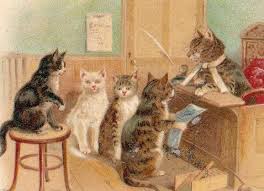 The joys and hard work of writing often seem stuck in a bottleneck as writers try to find an audience. For self-published or indie authors, finding readers is especially daunting. Every writer wants to know how he or she can build loyal followers into a readership.
The joys and hard work of writing often seem stuck in a bottleneck as writers try to find an audience. For self-published or indie authors, finding readers is especially daunting. Every writer wants to know how he or she can build loyal followers into a readership.
Writing Tip for Today: Although there are countless articles, books and webinars on marketing, today let’s peek behind that curtain to some more basic yet critical questions.
Who’s Your Audience?
When we start writing, many of us are our own best fans. We write what WE have to say and then polish it up. But a crucial step in developing as a writer is in realizing that your writing—even if it’s memoir—is not about YOU. I know—it sounds awful, but it’s true. Your readers want to see their own reflection in your story. How else can anyone else relate or understand another person’s story? You may not look, think or act alike, but your reader must recognize something in your story that triggers a response of, “Oh yes, I know exactly what you mean!” Start by visualizing twelve of your ideal readers. Put their names on a grid and imagine them as a jury of your work. You might even pin this grid where you can see it as you work. By keeping these twelve highly-prized readers visible, you can remind yourself to stay on message and be true to what you are offering them.
What’s Your Promise?
And what exactly are you offering? As has been often stated, “A story is a promise.” In the opening of your story, you hook the reader, sure, but you also chart the course of your story. By doing so, there’s an implied promise—if you dear reader stay with me, I promise you’ll find out what happens to our character. By clearly stating the journey, goal and obstacles in a story’s beginning, readers decide if they think these stated promises are worth their time. Unlike real life, where we often wander around aimlessly or have no real goals, a story opening must possess a game plan for readers to evaluate. The promise can be simple: Will the guy get the girl; will the killer be caught? Or, the promise can be subtle: Will our hero learn to love again, will she grow up, will she learn an important life lesson? I’ve posted several entries on discovering your story’s theme, promise or protagonist goal, so I won’t repeat, but every writer must be able to articulate the story promise. If you can’t, or it doesn’t sound interesting, then it might be time to revisit your overall story to raise stakes or define the goal and obstacles more clearly.
What’s in it for Them?
Building a readership is more than simply convincing people to read until the end. Ideally, you want readers to clamor for your next story. The battles over branding and sticking to one kind of story rage on, but one thing is certain: in order to attract more readers, they must come to expect something in your work that provides a takeaway for them. Maybe the takeaway is a warm fuzzy feeling or being scared out of their wits, but there must be something in your story for readers to take with them. Humor, profundity, indignation, inspiration, melancholy and eeriness also may be suitable takeaways, but whatever the takeaway is, don’t try to be “educational.” Writers who insist they write to educate readers are prone to making those readers sit in uncomfortable desks for far too long while the author dazzles her students with all that lovely research. Instead, make your takeaway be more organic to the character and the story. A readership usually builds over time, but if consider your readers at every turn, they’re far more likely to come.




